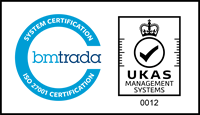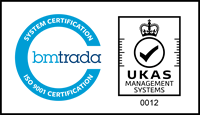Posted on: Thursday July 11, 2019

Employee experience is a term that has been bandied around the sector for several years, but it seems to be interpreted differently depending on who you speak to and the situation being referred to.
What Does Employee Experience Mean?
Many confuse employee experience with employee engagement. However, employee engagement is the level of enthusiasm and dedication your employee feels towards their job. For engaged employees, their work is more than just a means to receive their pay cheque, they feel enthusiasm for the tasks set for them, and they are passionate about the success of the company itself.
Define: Employee Experience
Employee experience is not the employee life cycle, employee value proposition or talent management. It isn’t free perks for staff, an app or even employee satisfaction.
An experience is something an employee has; what former employees will look back on, and what future employees will ask prospective colleagues. Every organisation has an employee experience and improving it means more than just improving processes and tools. Too often we see the ‘employee engagement’ and ‘employee experience’ categorised in the same way but that simply isn’t accurate.
A great way of looking at it, and one a perspective that’s good to refer to if lines get blurred, is from Jacob Morgan’s Employee Experience book which says if “engagement is the effect – experience is the cause”. Employee engagement is a shot of adrenaline, it might be good for ensuring a short-term solution, however employee experience is certainly the long-term cure.
Physical, Technological and Cultural
To simplify employee experience, we at Personal Group like to split it into three elements: the physical, the technological and the cultural.
The Physical Environment
The physical environment of a company might include an employee’s place of work, the temperature of the office, amenities they have at work or the chairs they sit on. It includes start times, work life balance and where employees eat their lunch.
The Technological Environment
The technological environment is made up of the systems that staff use, how easy it is to book a holiday or tell your line manager that you’re sick, or even how easy it is to access the office building. A key consideration here is the comparison between work technology and consumer technology: outside of work, employees have come to expect a very high level of customer experience – businesses must match these standards within the office to create a compelling employee offer.
The Cultural Environment
The cultural element is a lot less tangible. You can have processes in place to support the culture you want in your organisation, but so often when you look at the reality of many processes, they are counter-productive to the culture you’re trying to create.
Why does all this matter?
Will staff really care if the chair isn’t the comfiest or it takes an extra few second to log a holiday?
Well, one of the problems that we face as a society is that global engagement scores are either slowing or declining, and happiness at work is falling. There is more pressure for organisations to perform and increase productivity, but declining employee loyalty is hindering this. Previously, it was assumed that employees ‘needed’ their job to pay the bills and whilst this is still the case employees are no longer reliant on a single employer.
An article by the BBC in January 2019 found that a quarter of UK adults run at least one side hustle business and the average side hustle makes about 20% of an employee’s annual income. Collectively they are thought to contribute £72bn to the UK economy. If your staff don’t want to work in your office, they’ll soon find something better.
How Do You Measure and Improve the Employee Experience?
The model that we use at Personal Group is the Tell, Show, Grow, Evolve model. This model can be applied to the physical, cultural and technology employee experience in your workplace and is easy to interpret. Think of it as a scale – with Tell on the left and Evolve on the right.
The left hand-side would be very company-led and the right hand-side would be very employee led:
Tell
The Tell approach has very rigid measures for success and employees are told of the values and that they will believe them. If they don’t like it, then tough, this is what the company believes. The Army is a perfect example of an organisation with this approach.
Show
The Show approach has slightly more freedom - a company will tell its employees how they should feel to work there and the values they should embody to be rewarded
Grow
The Grow approach asks questions. A company would ask how employees feel about working there and ask how their employee experience could be improved. This method uses employee feedback to make impactful and meaningful changes.
Evolve
Finally, the Evolve approach is employee-led. Employees shape and evolve the company’s reason for being.
The ‘Right’ Employee Experience
It’s important to not think of this method as a scale for what’s right or wrong, and instead to establish what your approach is. Evolve isn’t always correct. For some, their business works best and most effectively as a Tell or a Show, like the Army as previously mentioned. The best place for your organisation depends on many things like attitude to control, levels of trust in both your employee and trust they have in you, your competitor landscape and even your sector.
Employee experience will be different for each organisation, but to make the experience work as well as possible, you need to either find employees who share the same desires, needs and wants to fit your current organisational design, or re-design the current experience to get the most from your existing employees. You could even design the experience to attract the employees you want, not necessarily to match then needs and wants of employees you have. None of these are necessarily right or wrong, the important thing is that your approach matches your own company objectives. When these two things are aligned, you can’t go wrong.
If you haven't already sign up to our blog for weekly insights straight to your inbox.
Cost vs Value – What Really Matters in Health Benefits?
When it comes to creating employee health benefits, there’s always a tug-of-war between keeping costs low and focusing on the actual value those benefits bring.
Posted on: 11 April 2025 by Andrew Walker, New Business Development Director
Top Tips to Improve a Misfiring Recognition Strategy
Whether you’re a professional footballer, engineer or care worker, happiness at work relies on feeling valued, appreciated and respected.
Posted on: 28 March 2025 by Andrew Walker, New Business Development Director
Brace Yourselves: Reward Storm Incoming
In even the most optimistic assessment of the current situation, it is hard to foresee a situation where a substantial portion of workers are not left underwhelmed by their pay offers in 2025.
Posted on: 13 March 2025






